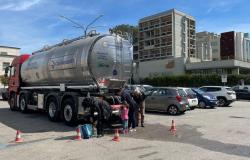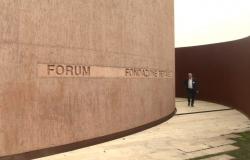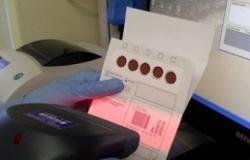First the flurry of demolitions signed “Fleximan”, then the split between mayors in favor and mayors against, finally the Salvini decree which imposes rules…
Already a subscriber? Log in here!
- Everyone the articles of the site, also from the app
- Insights and newsletters exclusive
- THE podcasts of our signatures
– or –
Subscribe to the subscription by paying with Google
Subscribe
SPECIAL OFFER
SPECIAL OFFER
MONTHLY
€4.99
€1 PER MONTH
For 3 months
ACTIVATE NOW
Then only €49.99 instead of €79.99/year
Subscribe with Google
First the flurry of killings signed “Fleximan”, then the split between mayors in favor and mayors against, finally the Salvini decree which imposes stricter rules for the installation. For six months, speed cameras have been at the center of news and political conflict. But how much money do they bring into public coffers and how are these revenues then used? An official response comes from the Ministry of the Interior which in the last few hours has published the “Report of proceeds from violations of the highway code” relating to the year 2023. If we focus only on fines for speeding we discover that throughout the province of Padua the sanctions weigh a total of at least 16 million euros (the figure is destined to increase given that for some Municipalities the data is not yet available).
THE RANKING
The overall amount includes all types of fines linked to speeding, including those triggered by mobile lasers, but the vast majority naturally comes from fixed speed cameras. The most debated and contested ones.
In first place there is obviously the capital: with its eleven speed cameras managed along the ring of ring roads the Municipality of Padua in 2023 it recorded fines of 4.8 million euros. A progressively decreasing number: in 2022 there was talk of 4.9 million and the year before even 8.7. In Padua the total proceeds from Highway Code fines in 2023 were 15.6 million and this means that fines for speeding account for a third.
In second place is Cittadella with 3.4 million fines. Here there are five veloxes, in a context where we find 40 thousand vehicles a day, high volumes of heavy traffic and dangerous arteries that cut the country in two.
THE LEGAL BATTLE
In third place with 1.6 million here Cadoneghethe Municipality of the two speed cameras with 58 thousand fines in two months demolished last summer along the old Road of the Saint. A legal battle is underway linked to irregularities in the installation process of the instruments and the former brigade commander is under investigation for forgery of public documents and attempted extortion. Many fines have already been canceled and Mayor Schiesaro explains about those 1.6 million: «It is money set aside because it will have to be returned. The sum that really remains in the end is 63 thousand euros.”
THE OTHER MUNICIPALITIES
In the particular ranking we then find: San Pietro in Gu with 1.2 million, Tribano with one million and Piove di Sacco with 871 thousand euros.
Having said that for some Municipalities the sum has not yet been published on the Interior Ministry website, it should be highlighted that for various administrations it is only possible to have an aggregate figure. This is the case of the ten municipalities of the Camposampierese Federation: there are five fixed speed camera stations here and in total they add up to 1.9 million euros in fines issued in 2023. The same sum, 1.9 million, is recorded by the Union of Pratriarcati (Albignasego, Maserà and Casalserugo) which also manages a much discussed speed camera in Albignasego immediately after the Battaglia road junction, where the limit drops from 90 to 70 per hour.
There are also 23 Municipalities that declare they have not collected even one euro. In general, the Upper Padua has much higher figures than the Lower Padua.
THE MECHANISM
These are the data on fines, but it is wrong to think that the mayors collect all this money. First of all it should be remembered that many Municipalities manage to actually collect less than 50% of the fines issued and then it should be remembered that half of the sum goes to the owner of the road: many velox are on state, regional or provincial roads. In the end, therefore, most administrations take home 25% and by law half of this amount must be used for road interventions such as signs, cycle paths and so on. The rest must be diverted to culture, social services and other sectors. On the Ministry of the Interior website it is possible to find for each Municipality (but also for Unions and Federations) the details of how much money has been redistributed to other bodies that own the roads and how the money collected has been spent.
© ALL RIGHTS RESERVED
Read the full article at
The Gazzettino







